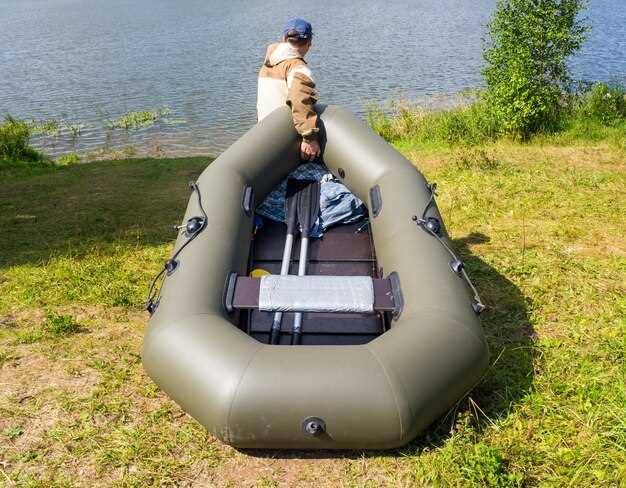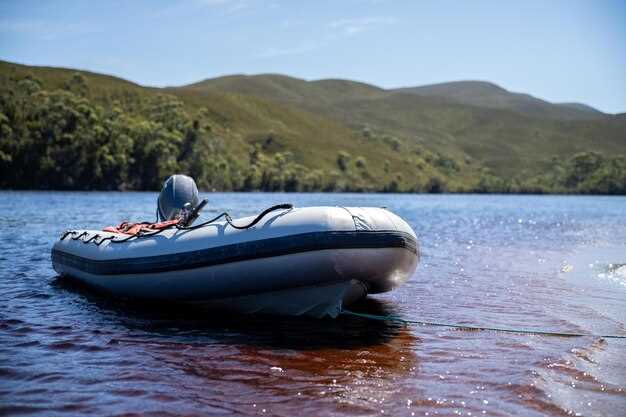
When it comes to choosing the right type of boat for your aquatic adventures, both inflatable and rigid-hull options present unique sets of advantages and disadvantages. Each type caters to different needs and preferences, making it essential for potential buyers to understand the distinctions between these two categories. In this article, we will delve into the characteristics of inflatable boats and rigid-hull boats, allowing readers to make informed decisions based on performance, convenience, and intended use.
Inflatable boats are celebrated for their lightweight design and portability, making them popular choices for recreational activities such as fishing, sailing, and even leisure cruising. Their ease of storage and transport can be a significant advantage for those with limited space or for people who frequently travel. However, inflatable boats may have limitations in terms of durability and long-term use compared to their rigid counterparts.
On the other hand, rigid-hull boats boast a sturdier construction that typically offers better stability and performance in rough waters. This durability makes them suitable for longer trips and harsher conditions, yet they often come with a heftier price tag and require more storage space. Understanding the pros and cons of each type will be crucial for anyone looking to invest in a boat, as the right choice can greatly enhance your on-water experience.
Inflatable and Rigid-Hull Boats: Advantages and Disadvantages
Inflatable boats are known for their lightweight construction and ease of transportation. They can be deflated and packed into compact spaces, making them ideal for outdoor enthusiasts with limited storage. Their flexible nature allows them to absorb shocks, providing a smoother ride in choppy waters. Additionally, inflatable boats usually have a lower initial cost compared to rigid-hull options, making them accessible to a broader range of users.
However, inflatable boats may be more susceptible to punctures and damage from sharp objects, requiring careful handling and maintenance. Their durability can be a concern, particularly for long-term use in rough conditions. They also may lack the stability and speed that some rigid-hull vessels offer, which can affect performance on open waters.
On the other hand, rigid-hull boats provide enhanced durability and stability. They are typically built from fiberglass, aluminum, or other robust materials, making them less vulnerable to damage from impacts. Their design allows for better handling at high speeds and in adverse weather conditions, making them suitable for a variety of nautical activities. Moreover, rigid-hull boats often have more defined hull shapes that contribute to improved performance and fuel efficiency.
Nonetheless, rigid-hull boats are usually heavier than their inflatable counterparts, which can make them less convenient for transport. They also tend to have a higher price point, which might deter some potential buyers. Storage may present a challenge as well, requiring more space and consideration compared to inflatable models.
In conclusion, the choice between inflatable and rigid-hull boats depends on individual needs and preferences. Those seeking portability and affordability may find inflatable boats more appealing, whereas users looking for durability and performance in challenging conditions might prefer the reliability of rigid-hull designs.
Weight and Portability: How Do They Compare?
When evaluating inflatable boats and rigid-hull boats (RIBs), weight and portability are crucial factors for potential owners. Inflatable boats are typically lighter due to their construction, which employs buoyant materials like PVC or Hypalon. This lightweight design facilitates easier transport and storage. Many inflatable models can be deflated and packed into manageable sizes, making them ideal for those with limited storage space or those who need to transport their boats frequently.
In contrast, RIBs are constructed with a solid hull and inflatable tubes, offering superior stability and performance but at the expense of weight. While RIBs are still portable and can be trailer-mounted, they often require more effort and resources for transport compared to their fully inflatable counterparts. The rigid hull contributes to a heavier overall weight, which can be a consideration for users who frequently move their boats between storage and water.
In terms of portability, inflatable boats can be easily carried by one or two individuals, depending on the size, making them suitable for spontaneous excursions or traveling to remote locations. RIBs, while designed for more rigorous use, may necessitate additional assistance due to their weight and structure, particularly when launching or retrieving from the water.
Ultimately, the choice between inflatable and rigid-hull boats hinges on individual needs. For those prioritizing ease of transport and storage, inflatables are generally more favorable. Conversely, RIBs may appeal to users seeking durability and performance, understanding that portability may be compromised in favor of enhanced capability on the water.
Durability and Maintenance: Which Option Lasts Longer?
When considering durability in the context of inflatable versus rigid-hull boats, it is essential to recognize the inherent differences in their construction materials and design. Rigid-hull boats are typically made from fiberglass, aluminum, or wood, making them highly resilient to impacts and abrasions. These materials provide a longer lifespan under normal usage conditions, often lasting several decades with appropriate care.
In contrast, inflatable boats are constructed from materials like PVC or Hypalon, which are lighter but may be more susceptible to punctures, UV damage, and other environmental factors. While modern advancements in manufacturing have improved the durability of inflatable boats significantly, they still generally require more cautious handling compared to their rigid counterparts.
Maintenance is a critical aspect that impacts the longevity of both types. Rigid-hull boats often need periodic inspections for hull integrity and repairs for any surface damage, while inflatable boats require attention to seams and potential leaks. The maintenance of inflatable boats includes regular cleaning to prevent mold and deterioration of the material, especially after exposure to saltwater.
In terms of ease of maintenance, inflatable boats may offer advantages due to their lighter weight and compact nature, making repairs more accessible and transportation simpler. However, when considering long-term durability, rigid-hull boats tend to have the upper hand, provided they are maintained properly. Ultimately, the choice between inflatable and rigid-hull boats may depend on the intended use and the owner’s willingness to invest in maintenance and repairs to ensure longevity.
Cost Analysis: Budgeting for Your Boat Choice

When considering a boat purchase, understanding the cost implications of inflatable and rigid-hull boats, particularly RIBs (Rigid Inflatable Boats), is essential for making an informed decision. This analysis focuses on key financial aspects related to both types of boats.
Initial Purchase Costs
- Inflatable Boats: Generally, these are more affordable. Prices can range from a few hundred to several thousand dollars depending on size, brand, and features.
- RIBs: Typically have higher initial costs due to their construction materials and performance capabilities. Prices often start at a few thousand dollars and can exceed tens of thousands for larger, feature-rich models.
Maintenance and Upkeep
- Inflatable Boats: Maintenance costs are usually lower. Regular checks for leaks, cleaning, and proper storage are essential but generally inexpensive.
- RIBs: Require more significant upkeep. Regular maintenance of the fiberglass hull and engine service can lead to higher ongoing expenses.
Operating Costs
- Fuel Efficiency: Inflatable boats tend to be lighter, offering better fuel efficiency compared to RIBs, thus reducing fuel costs significantly.
- Transportation Costs: Inflatable boats are easier to transport due to their lightweight and deflatable nature, which can save on towing expenses and storage fees.
Insurance and Resale Value
- Inflatable Boats: Insurance rates are generally lower due to their lower replacement value. However, they may depreciate faster.
- RIBs: While insurance may be higher, RIBs often retain better resale value if maintained properly, appealing to second-hand buyers.
Conclusion

In evaluating the cost analysis between inflatable and RIB boats, consider not just the initial purchase price but also maintenance, operating, and insurance costs. While inflatable boats often provide a more budget-friendly option, RIBs might offer better long-term value and performance. Assessing your specific needs will help in making the best financial choice for your boating experience.



